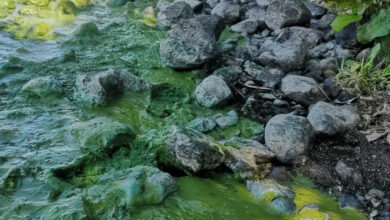Sustainable water: Progress and challenge

Significant progress will be required in the coming years if the ambitions of a 25-year long-term water strategy for Northern Ireland are to be realised.
Published recently, the sixth annual report on Sustainable Water, Northern Ireland’s long-term water strategy from 2015 to 2040, highlights several achievements in the first six years of the strategy. However, over 80 per cent of actions remain to be completed.
The May 2023 report assesses progress to 2021/22, particularly in relation to four-high level aims of:
- securing high-quality sustainable supplies of drinking water for households, industry, and agriculture;
- managing flood risk and drainage;
- achieving the environmental requirements of the Water (Amendment) (Northern Ireland) (EU Exit) Regulations 2019 in a sustainable manner; and
- providing sustainable water and sewerage services to meet customers’ needs.
The long-term strategy is underpinned by an action plan containing 231 actions, categorised within short-term (2015-2021), medium-term (2021-2027), and long-term (2027-2040). To date, only 30 actions have been completed (25 short-term, four medium-term, and one medium/long-term), which represents less than 13 per cent of the targeted actions.
Published by the Department for Infrastructure, which has responsibility for the strategy’s implementation, the progress report stresses the importance of ensuring the strategy aligns with other government policy priorities, namely the response to the Climate Change Act and the cross-governmental Green Growth strategy.
The report adds: “The [Covid] pandemic has reinforced the vital role that water plays in protecting the health and wellbeing of our citizens, and this has underlined the need to manage our water resource in a more sustainable way, to help ensure that there is sufficient water available to meet the future demands of the population.”
Drinking water supply and demand
Some of the successful initiatives so far, highlighted in the annual report, include projects delivered under NI Water’s Sustainable Catchment Area Management Plan (SCAMP), not least the reduction of chemical usage in the water treatment process.
Led by NI Water, lead pipe replacement continues under its PC21 plan and the utility remains involved in a research project working with Water UK, examining lead plumbosolvency control technology.
The Drinking Water Inspectorate (DWI) continues to “constructively engage” with NI Water to regulate drinking water quality, resulting in 99.88 per cent compliance for overall public drinking water quality for 2021. DWI did take enforcement action in 2021, including pursuing the first drinking water prosecution case against NI Water under Article 110 of the Water and Sewerage Services (NI) Order 2006.
Additionally, the Drinking Water Inspectorate developed a new Single Private Well web application which was officially launched on the Department for Agriculture, Environment and Rural Affairs (DAERA) website in March 2022, providing bespoke advice and guidance to the owners and users of private wells on protection of the groundwater, treatment options and steps to take to ensure the quality of their water supply is safeguarded.
Alongside NI Water’s current development of its next Water Resource and Supply Resilience Plan, the organisation has undertaken several energy efficiency projects across its water assets, primarily focusing on pump optimisation and control.
Investment of around £1.8 million during the PC21 period on pump optimisation and control improvement is expected to bring about an estimated £720,000 of energy benefits.
“This will help to unlock significant energy and carbon savings, reducing operating costs and providing a better value service to customers,” the report states.
Flood risk management and drainage
In recognition of rising flood events in the region in recent years, including autumn 2023, the strategy aims to manage flood risk and drainage in a sustainable manner.
As the competent authority for implementing the Floods Directive in Northern Ireland, the Department for Infrastructure published the second cycle Flood Risk Management Plan (FRMP), a single plan covering all three river basin districts, in December 2021.
As well as working with local councils to ensure new local development plans include informed decisions in relation to flood risk policies, DfI co-lead a multiagency group exploring options for the approval and adaptation of sustainable drainage systems (SuDS) assets, to encourage their uptake among developers.
Living with Water in Belfast, an estimated £1.4 billion capital investment over the next 12 years, and an integrated plan for drainage and wastewater management in Greater Belfast, published in November 2021, is currently being extended. The development of a strategic drainage infrastructure plan for Derry is underway, however, significant investment will be required in wastewater treatment works and sewerage networks.
Additionally, in relation to the aim of providing sustainable integrated drainage in rural and urban and high-risk areas, the annual report details work by NI Water’s process for removing stormwater and infiltration from the sewer network on a prioritised basis, spend by DfI Rivers of £18.7 million on drainage and flood alleviation schemes in 2021/22, and the award of a contract for the design and construction phase of the Belfast Tidal Flood Alleviation Scheme.
Finally, as well as the progression by DfI Rivers of its 10-year capital works programme for over 70 water-course-related projects, a new Asset Management Plan has been completed, enabling, and building on a database of above- and below-ground assets that is used to manage and value the asset.
Environmental protection and improvement
Although still awaiting Executive approval, the publication of the final River Basin Management Plan (2021/27) by the previous DAERA minister has set out a pathway for the protection and improvement of water over the next six years.
In October 2022, the DAERA Minister approved the final River Basin Management Plan (2021/27) including a programmes of measures. The plan, while still requiring Executive approval before it can be published, outlines the measures that will be undertaken to protect and improve our water over the next six years.
In 2021/2022, NI Water completed four sites within the Shared Waters Enhancement and Loughs Legacy (SWELL), a four-year €35 million project focused on the construction of new wastewater treatment works and upgrades to sewerage networks on both sides of the border to address wastewater pollution in Carlingford Lough and Lough Foyle.
Other progress includes:
- DAERA’s establishment of the Sustainable Catchment Project (SCP) to address cross cutting water quality issues in the Ballinderry, Dundrum Bay, and Upper Bann catchments;
- DAERA’s Forest Service supported an increased area of 525 hectares of new privately-owned woodland in 2021/22 and planted an additional 15 hectares of forest;
- work undertaken by Northern Ireland Environment Agency to carry out a “root and branch” review of water-related regulatory regimes;
- NI Water’s piloting of real time control/digital twin technologies at some wastewater treatment works sites, and pump optimisation technology; and
- preparation of a discussion paper on a new nature recovery strategy by DAERA, soon to be launched for consultation.
Water and sewerage services
NI Water failed to meet planned delivery in nine out of 45 key outputs in targets for year-on-year efficiency of the provision of water and sewerage services, overseen by the Utility Regulator.
The report identifies a number of key challenges to the continued progress of the long-term strategy, not least the need for significant financial investment over the strategy’s lifetime, recognising that funding availability will have an impact on key stakeholders’ ability to deliver the objectives of the strategy.
Also challenging is changing weather patterns, meaning increased water consumption at times of extreme heat, while managing flood risks in times of heavy rain. The impact of a wide range of pressures such as urban development, forestry, and chemicals on water catchments must also be considered, as does the need for flexibility to ensure the strategy aligns with the shape and nature of future agricultural support and agri-environment schemes.





